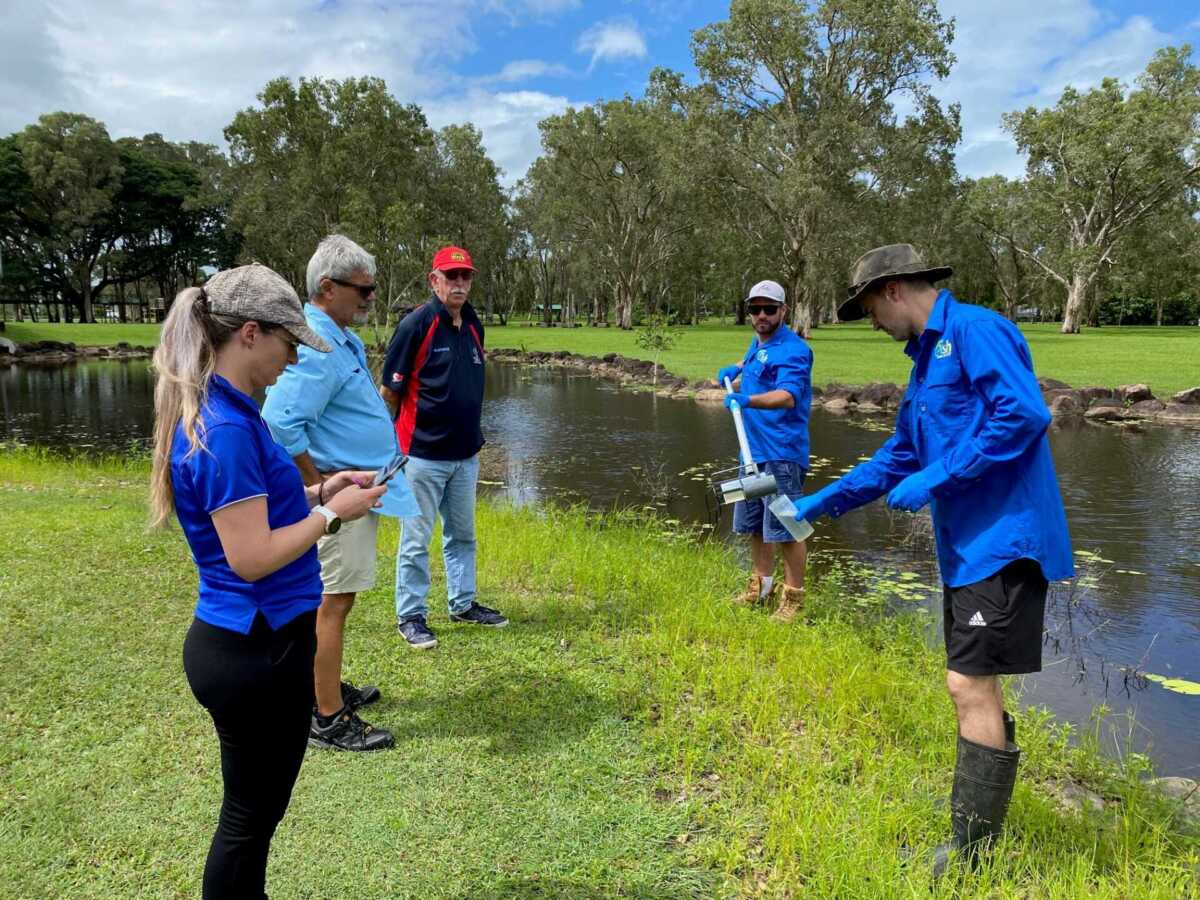Environmental DNA (eDNA) is being trialled to assess fish diversity in tropical waterways. We are working with our project partners to develop monitoring techniques using eDNA as an alternative to traditional fish sampling methods, such as netting or trapping, as they are not always easy or appropriate.

Understanding our fish
Waterways in tropical urban and agricultural environments have been highly modified over the past 100 years, with detrimental effects on fish and other aquatic life.
Our waterway monitoring efforts aim to improve our understanding of fish stocks in tropical waterways by conducting baseline fish surveys and habitat assessments, and through trialling new methods to assess the health of fish and invertebrate communities.
Mapping North Queensland fish stocks and habitat
This citizen science project is developing an eDNA metabarcoding method to describe aquatic communities in waterways of the dry and wet tropics.
The aim of our work is to develop techniques that will provide an alternative to other sampling methods, such as netting and electrofishing, which are both time and labour-intensive activities.
The eDNA sampling method we are trialling will improve our understanding of fish communities in catchments of the Great Barrier Reef (GBR) and assess the impact of waterway health on fish diversity in rivers and wetlands connected to the Reef.

Conducting fish surveys helps identify how urban and agricultural waterways can be improved for fish and allows local fishers to better understand the waterways in their backyards.

Charting fish by their habitats
The project team collected samples from 12 sites across the Herbert, Black, Ross and Burdekin River catchments in March and May 2023. We collected further samples from two locations in northern Cairns in May 2023. We are also working with our partners from CSIRO to assess the suitability of different sample collection methods for detecting DNA in tropical waterways, with samples collected from the South Johnstone River (Wet Tropics), Barratta Creek (lower Burdekin), and O’Connell River (Mackay-Whitsunday) in Nov 2023. Volunteers have contributed >150 h of time towards eDNA sample collection.
Community engagement
At the start of the project, most volunteers didn’t know what eDNA was or how it could potentially be used to sample fish stocks. To address this gap, OzFish and James Cook University staff trained volunteers in sample collection protocols. Briefs on water quality and habitat condition were also provided at each sampling site to enhance the volunteer’s skills and understanding further.


Ongoing monitoring
OzFish and our partners continue to monitor fish in North Queensland’s waterways through methods including trapping in fishways, deploying underwater video cameras and electrofishing. We are working to better understand the fish in north QLD waterways and improve habitat conditions for our fish stocks.
Projects like these strengthen the ties with the local recreational fishing community and provide knowledge about their local waterways. Our monitoring work provides baseline fish community data that helps fisheries scientists and environmental management practitioners understand the link between habitat condition and the health of fish stocks.
There is now an increased sense of stewardship of the waterways’ long-term environmental condition that will ensure that North Queensland’s fish stocks are carefully monitored.
Donate to OzFish today to help projects like this one across Australia.
Project activities are being delivered as a collaborative effort between OzFish Unlimited, TropWATER (JCU), Townsville City Council, CSIRO and the University of Queensland (UQ). This project is funded by the partnership between the Australian Government’s Reef Trust and the Great Barrier Reef Foundation. It is also supported by BCF – Boating, Camping, Fishing.























